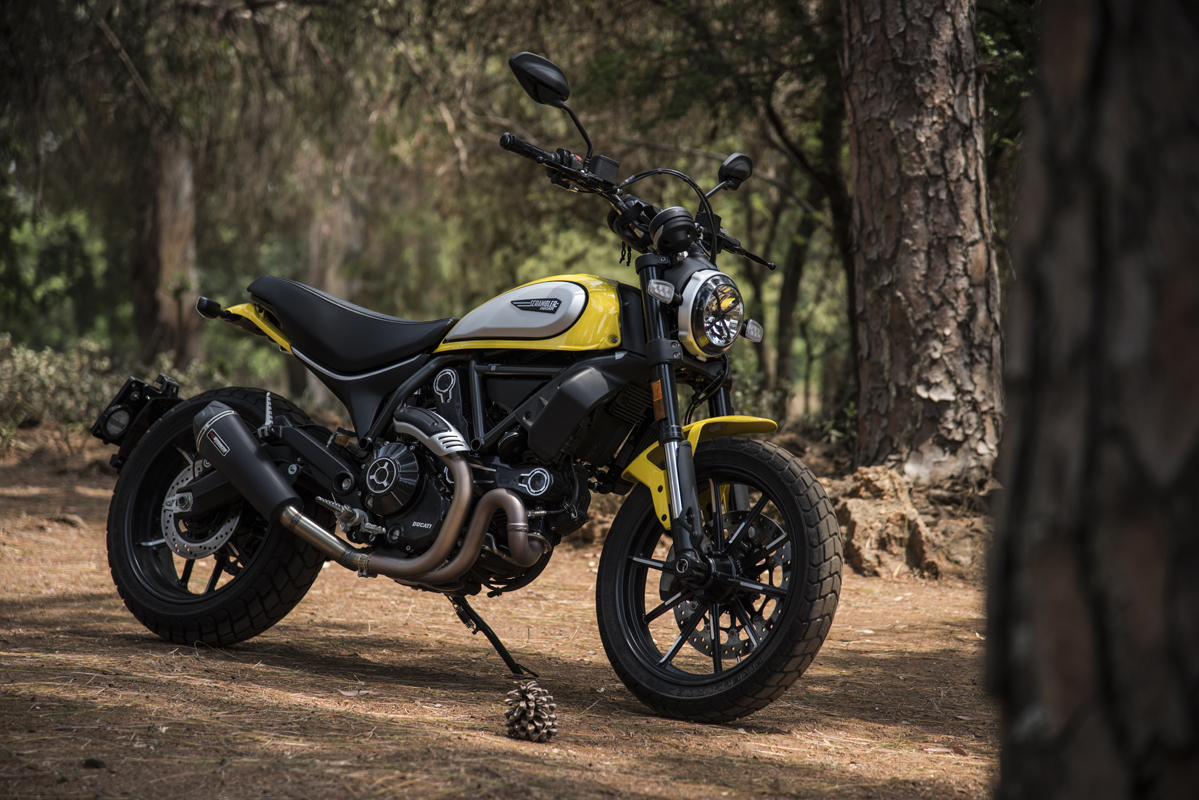
There are definite seasons in one’s life and the same can be said of our choice of bikes as time goes by. I cut my motorcycling teeth way back in the 70s. Sex, drugs, Rock ‘n Roll and dodgy handling motorcycles. Towards the end of that decade, bikes had made a huge leap in terms of overall ability. BMW and the Italian manufacturers like Ducati, Guzzi and Laverda had vastly better handling bikes than the offerings from Japan.
The gap only started to close as the ’70s started slipping away. Honda built their F1 and F2 CB750 variants which were decent handling bikes, as were the GS offerings from Suzuki. The beauty of these bikes and this era of bikes was their wonderful simplicity. Traction control was in your right wrist and ABS was dependent on the brake feel in your right hand. Electronic ignition was about to make points and condensers redundant. (“What are those?”, the Millennials cry in unison).
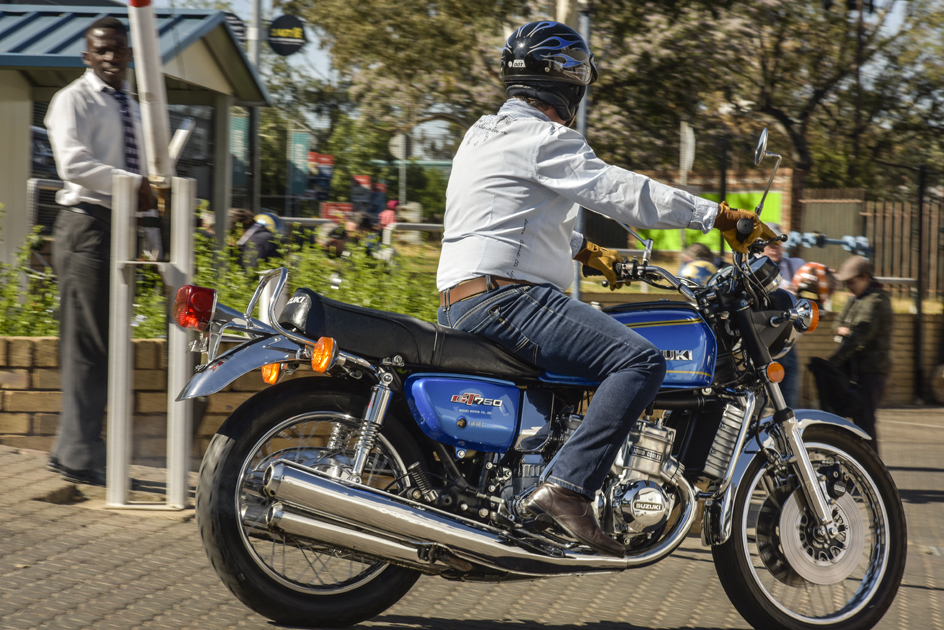
What you did when you bought a new bike was apply a few tried and tested tweaks. The back shocks went straight in the bin and you slapped on a set of S&W Strokers, with their blue and black variable rate springs. Front fork oil was drained and replaced with your particular blend of Wynns and Automatic Transmission fluid to give you the required viscosity and damping characteristics you wanted. A few washers were stacked on top of the fork springs to stiffen up the preload and you were good to go. Typically dodgy Jap tyres of that era would be replaced with Pirelli’s, Metzelers or maybe Avon Roadrunners. Spoon on a four-in-one exhaust and re-jet accordingly, after maybe drilling holes in your airbox to enhance flow. Now your bike was likely to run harder and handle pretty acceptably.
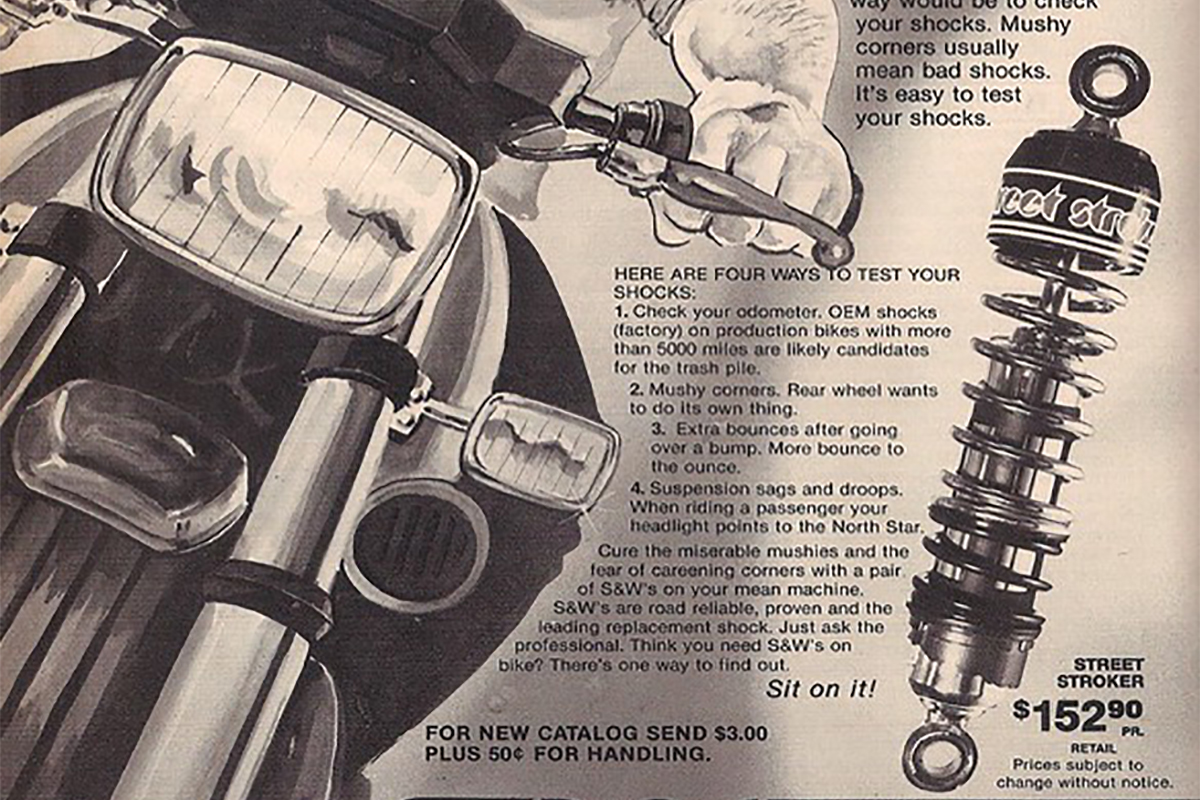
You would look forward to the weekend’s breakfast run to Stywe Lyne at Hartebeespoort Dam, running the Lanseria road flat out, inevitably slip-streaming one another in a high-speed train. This was easy as traffic was virtually non-existent early on a Sunday morning in those heady days. So why am I telling you all this?
I am trying to graphically explain how different the world and bikes were back then. Roads were smooth and unblemished too. Speeds were also south of 220, so riding slow bikes fast was incredibly exhilarating. I don’t need to paint the picture for today’s bikes and riding environment. You all know that too well. Bikes are stupid fast and good handling and roads are palpably poor. Not really a recipe for fun. With this in mind, I have been considering my options for an ‘old-school’ ride that harks back to a time when life was uncomplicated. I wanted a pokey, light and agile bike that above all things was simple and fun to ride. The sort of bike that will have you riding for the pure uncomplicated joy of it all. A bike where fun comes first and ego comes last. Enter the Scrambler Ducati Icon.
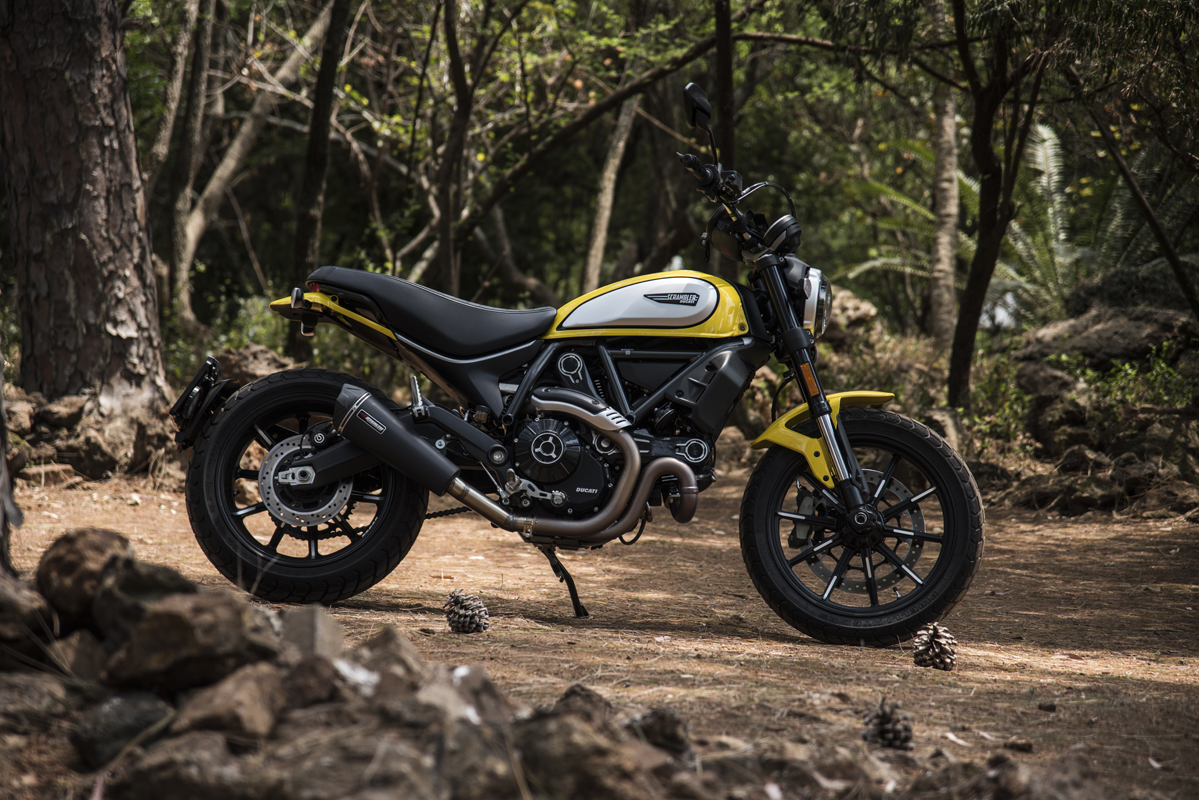
Ducati resurrected the Scrambler back in 2015. They wanted a simple, carefree yet competent freedom machine, that would appeal to a new generation of riders that was slightly contrarian. Skateboarders, surfers, rock climbers and the like. Guys and girls that got their kicks in nature, doing stuff that didn’t require tech, or maybe older riders wanting to return to a less complicated way of living and riding.
A bike that would carry you and some basic essentials to a place to pitch your tent, cook over a fire and sip on a mug of your favourite red while gazing out to sea or across a mountain vista. Maybe an endless desert or bushveld landscape. Your clothing reflects your outlook on life, basic and uncomplicated. Jeans, t-shirt, bandana, boots and an old well-worn leather jacket. Your helmet is probably an open face with a shield or even goggles.
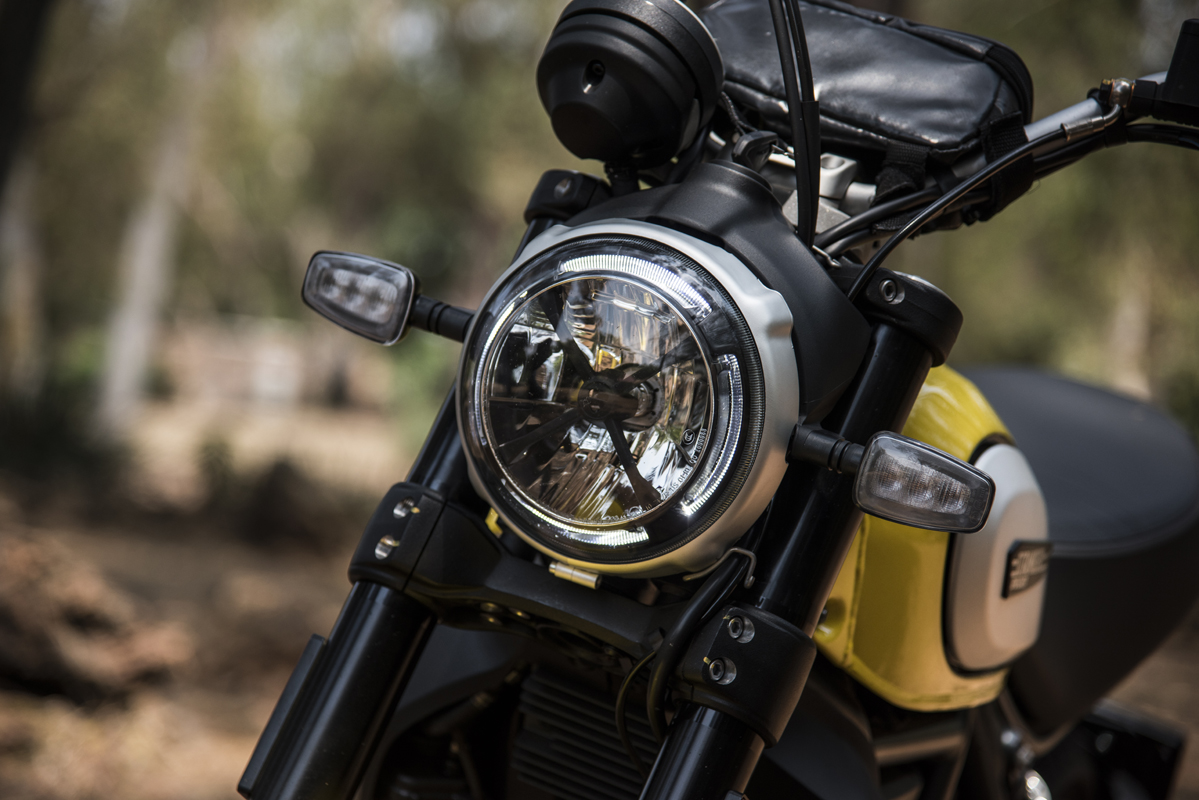
The Scrambler recipe is brilliant. At the heart of the beast is the iconic air-cooled L-Twin Ducati desmo motor. This means no radiators and complex plumbing, thus making a light bike even lighter. The mill is mated to a 6-speed gearbox, pumping out 75 ponies @8250 rpm and 68 Nm of torque @5750 rpm. It is a responsive yet mellow engine, perfect for its intended role.
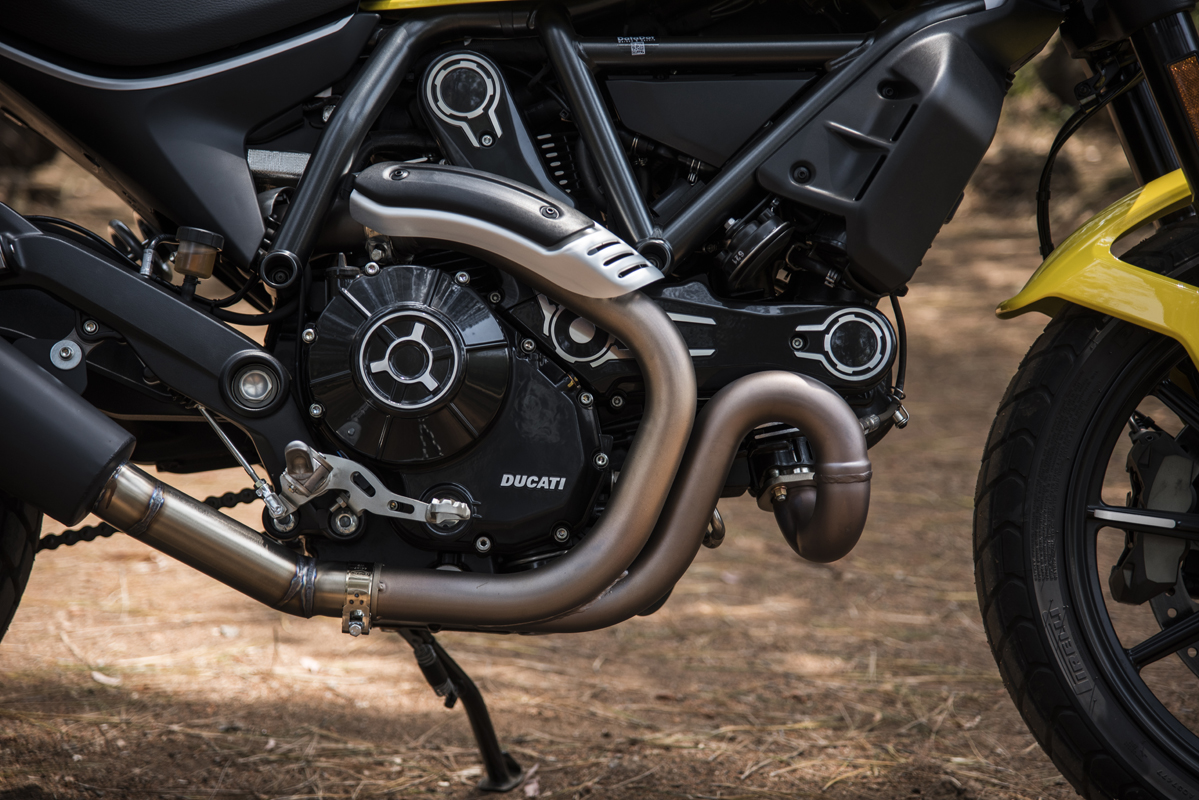
The frame is old-school robust tubular trellis steel, utilising the motor as a stressed member. Wheels are ten-spoke alloys with a meaty 180/55×17 rear and a 110/80×18 up front. Tyres are Pirelli MT 60s which were developed especially for the Scrambler by Pirelli and look rad with their flat-track-inspired look. They work pretty well on tar as well as blasting down a dirt track. Front forks are 41 mm USD Kayaba’s with a cantilever single Kayaba rear unit. Both ends have 150 mm of travel. Although only having preload adjustment on the back shock, the standard settings are pretty spot on for most applications.
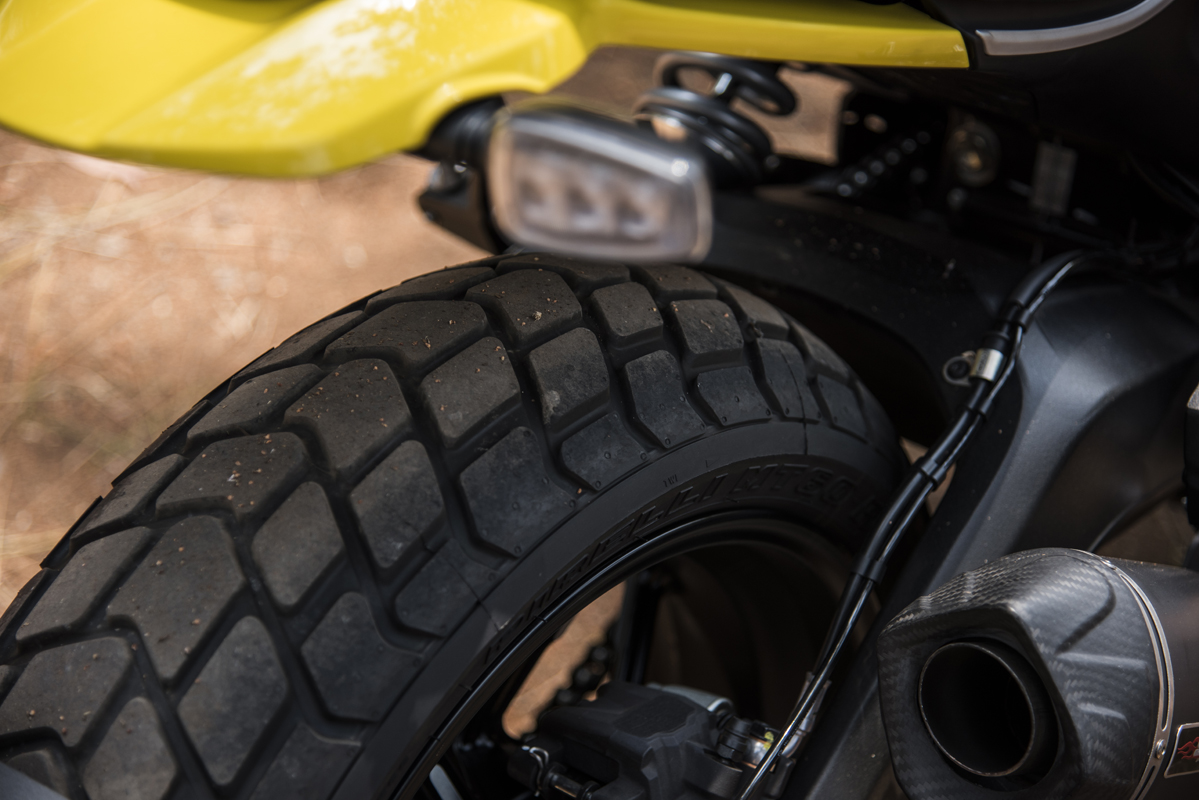
The fuel tank is reminiscent of the original Scrambler from 1962 and is customisable with detachable aluminium side panels. Capacity is 13,5 litres. A full tank of fuel is good for over 280 k’s of town and around. Bars are wide and fall comfortably to the hand, giving you a feeling of control. Instrumentation is everything I loved about bikes before we got hooked on complex TFT TV screens bolted to the front of our bikes. One button allows you to access all the information that you need, simply displayed on an LCD display in a neat round offset housing. Fuel gauge, gear indicator, clock, ambient temperature, trips, odo, rpm’s and even range. It is all there at the push of a button.
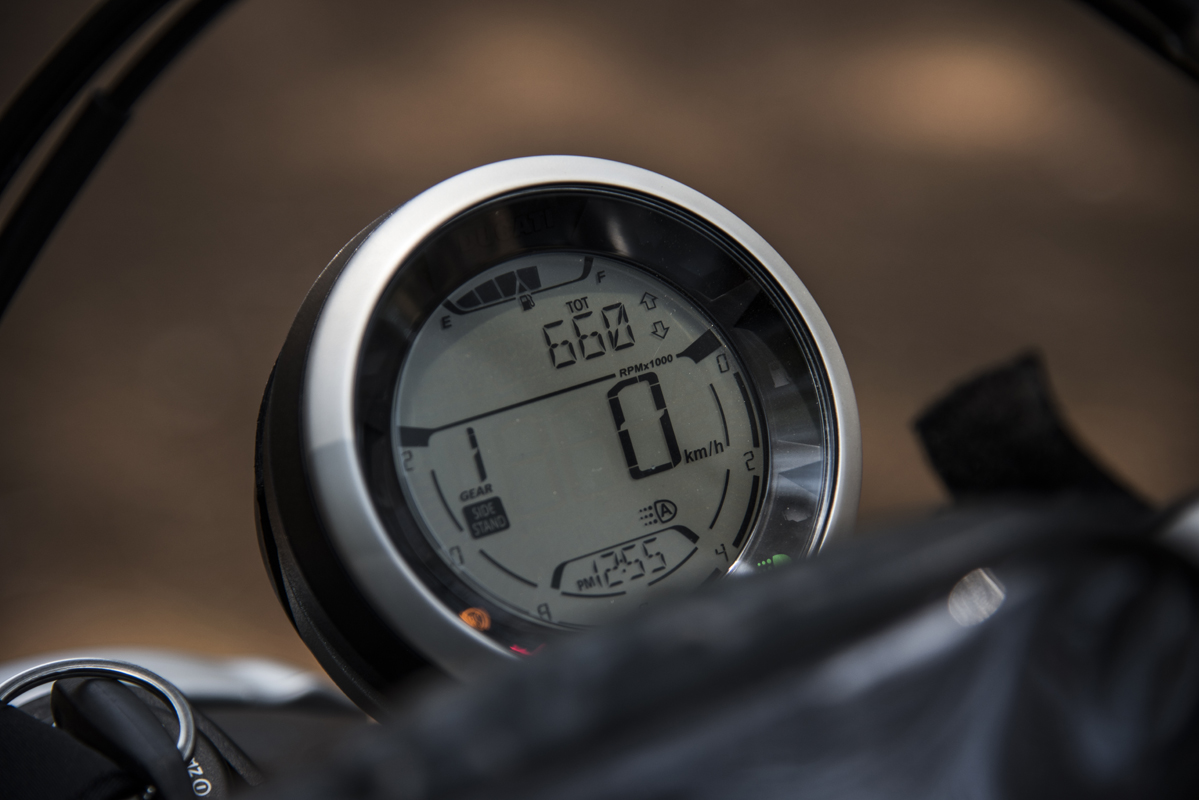
I had Jaco from Stealth, fit a slip-on pipe for me. The standard deadweight pipe and boom box bolts off with a clamp and two hangers. The slip-on probably tosses off at least 3 kg of weight from the already anorexic Scrambler, which is a mere 186 fully fuelled. By uncorking the pipe, the Scrambler gets a baritone rumbling voice which is music to the ears of anyone who has ever straddled a motorcycle. The torquey mill lets you short shift through the gears, with the L-Twin rumbling down the road with surprising urgency. Decent power and lightweight always were a recipe for fun.
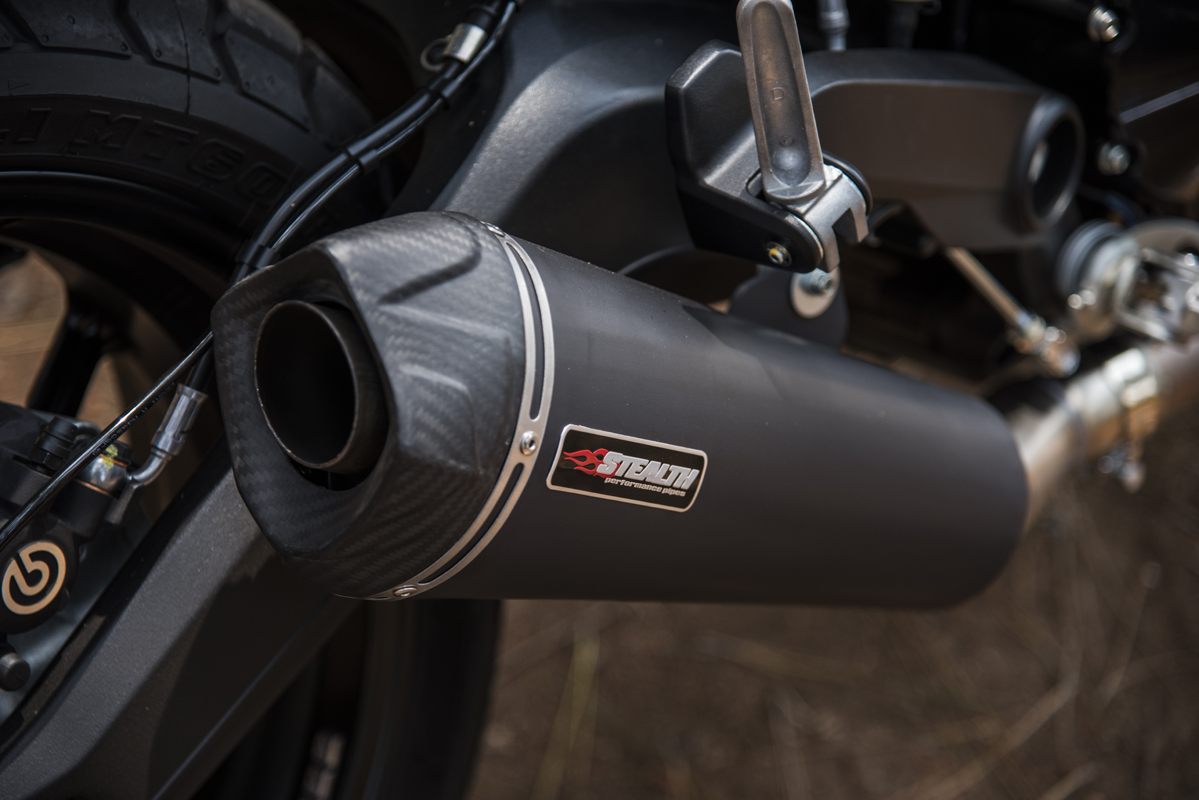
The Icon is most definitely undiluted old-fashioned fun! Wheeling it out of the garage you are immediately aware of the tidy dimensions and absence of bulky weight. Turn the key, hit the starter, revel in the cacophony of V-Twin sound, snick it into gear and ease out the new (since 2019) hydraulic clutch and the Scrambler rolls off the line effortlessly. As it warms up and settles into its lovely rhythm, it punts you down the road effortlessly. By superbike standards, it is not fast, but it delivers a completely satisfying performance for what it represents. It is a bike that reminds me of why I ride bikes. A Freedom Machine that emphasises that you don’t always have to be in the fast lane to enjoy your bike. It is a reminder that in so many ways less is indeed more.
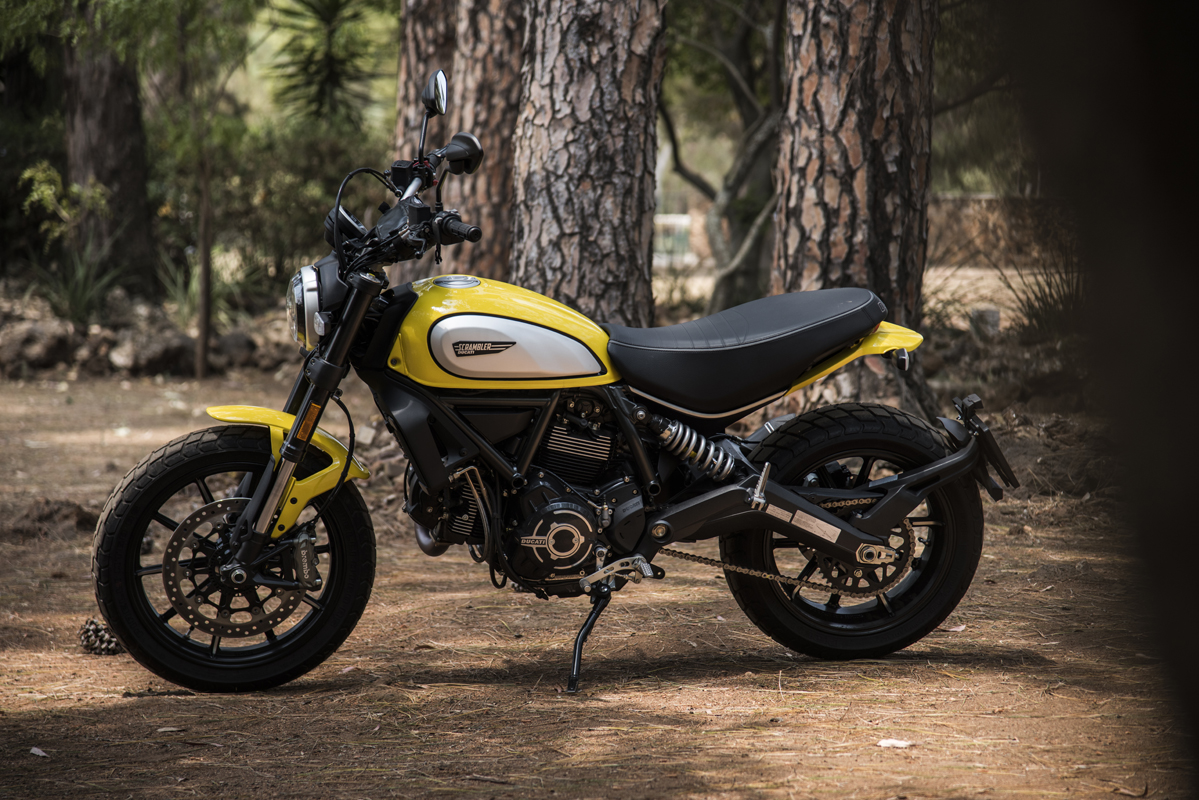
The punchy performance and general agility that is completely lacking in ‘serious’ bikes, are so much part of the fun of motorcycling. It’s just that we have forgotten all about it, seduced by a “bigger is better” mentality. The wide flat-track-type bars give you great leverage and control and contribute even more to the light and agile riding experience. You find yourself adopting a motard-like riding style, where you sit on top of the bike and blast through bends and obstacles. This bike just totally liberates the hooligan in you. The power compliments, rather than corrupts. The gearbox requires paying attention with precise shifts, especially on downshifts, or you find yourself ghost-shifting.
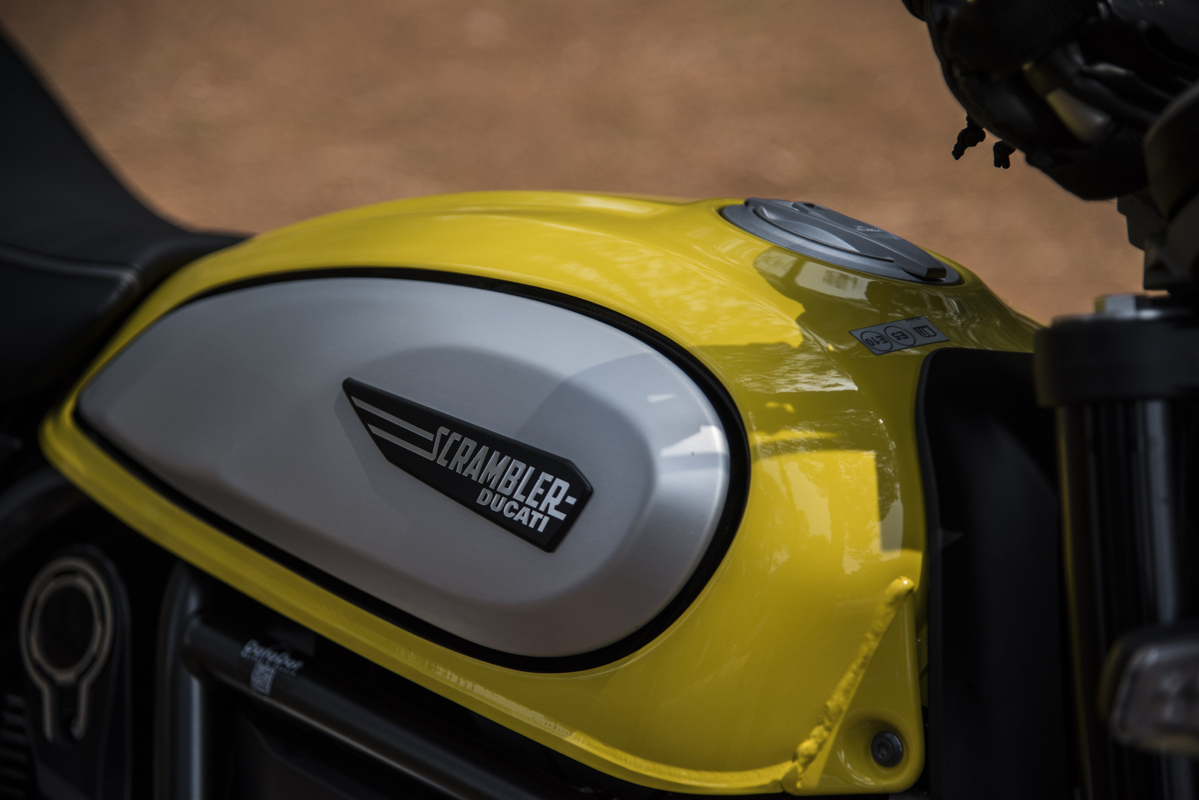
The Scrambler Ducati Icon is a truly special motorcycle for those who want an honest, good bike with a wide array of talents. It comes standard with an aura of Italian cool that is hard to quantify. It is a blank canvas on which you can express yourself in terms of customisation as well as utilisation. Rediscover why you ride, by shrugging off the woes of the world and investing in some incredible Italian minimalist therapy. Life is too short to not experience this kind of unadulterated motorcycling enjoyment. You will not regret it.
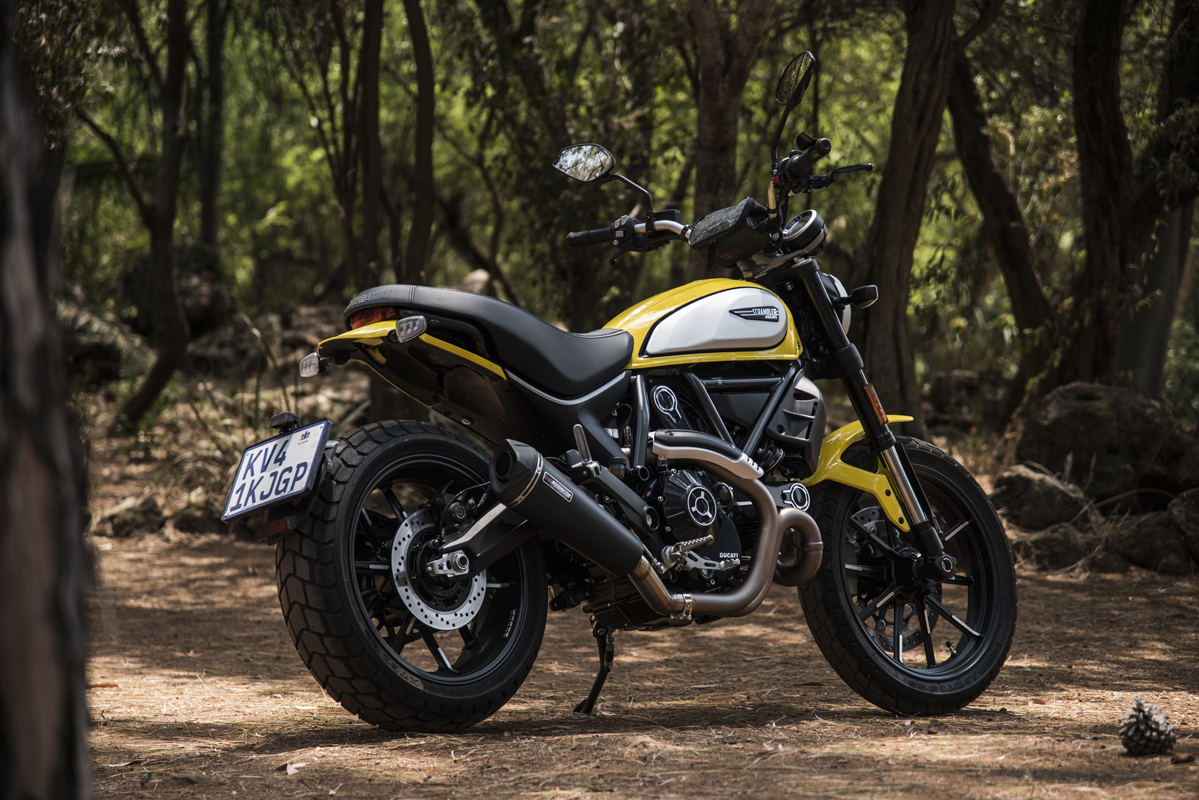
Ducati Scrambler Icon
For more information on the bike featured in this article, click on the link below…




